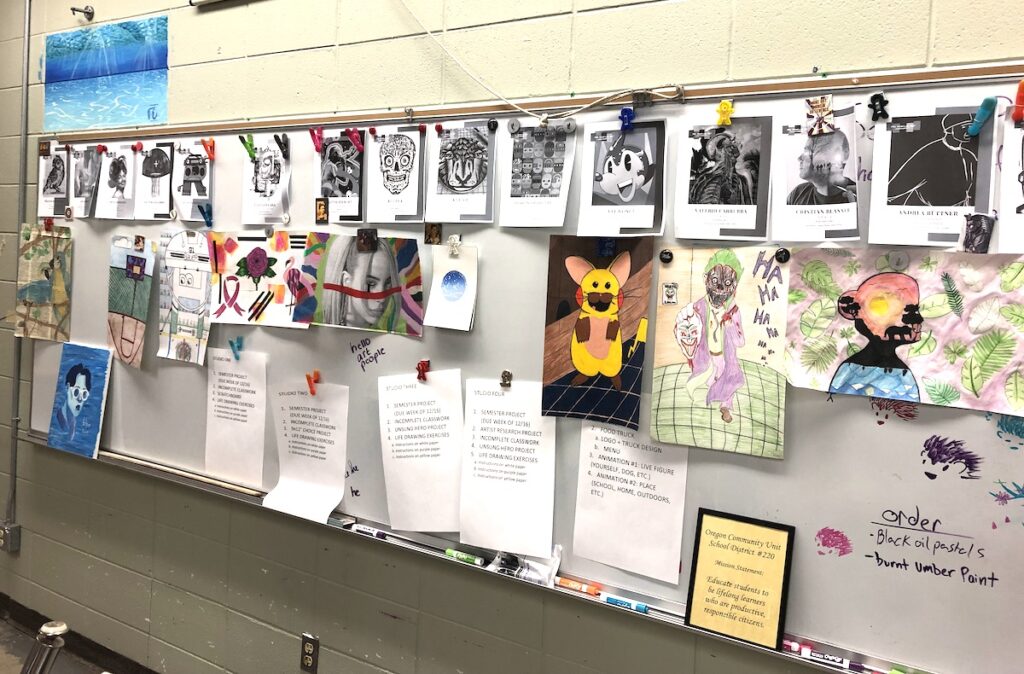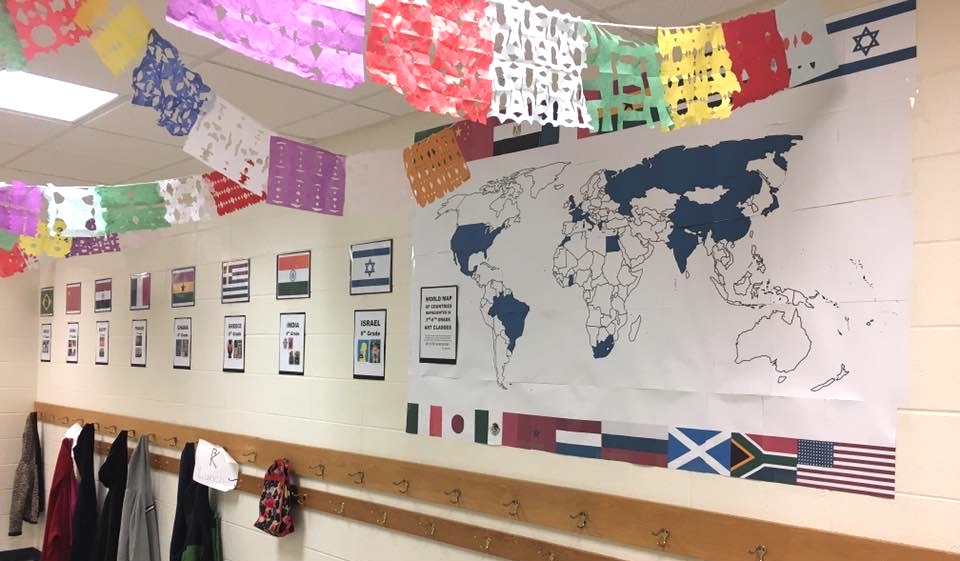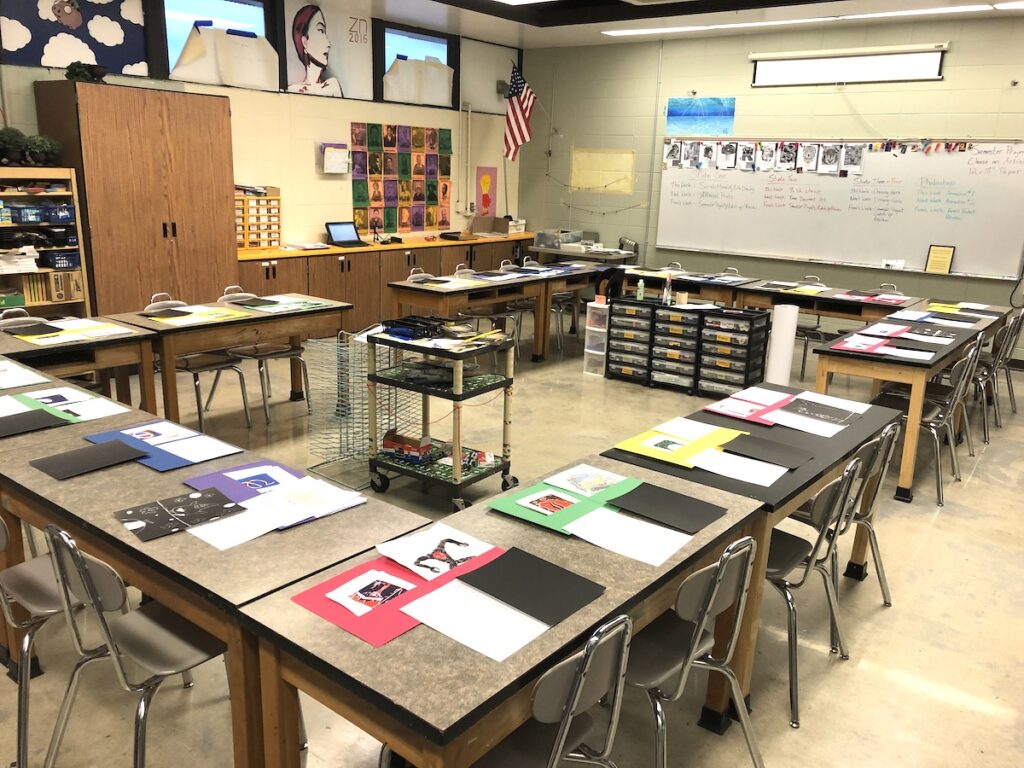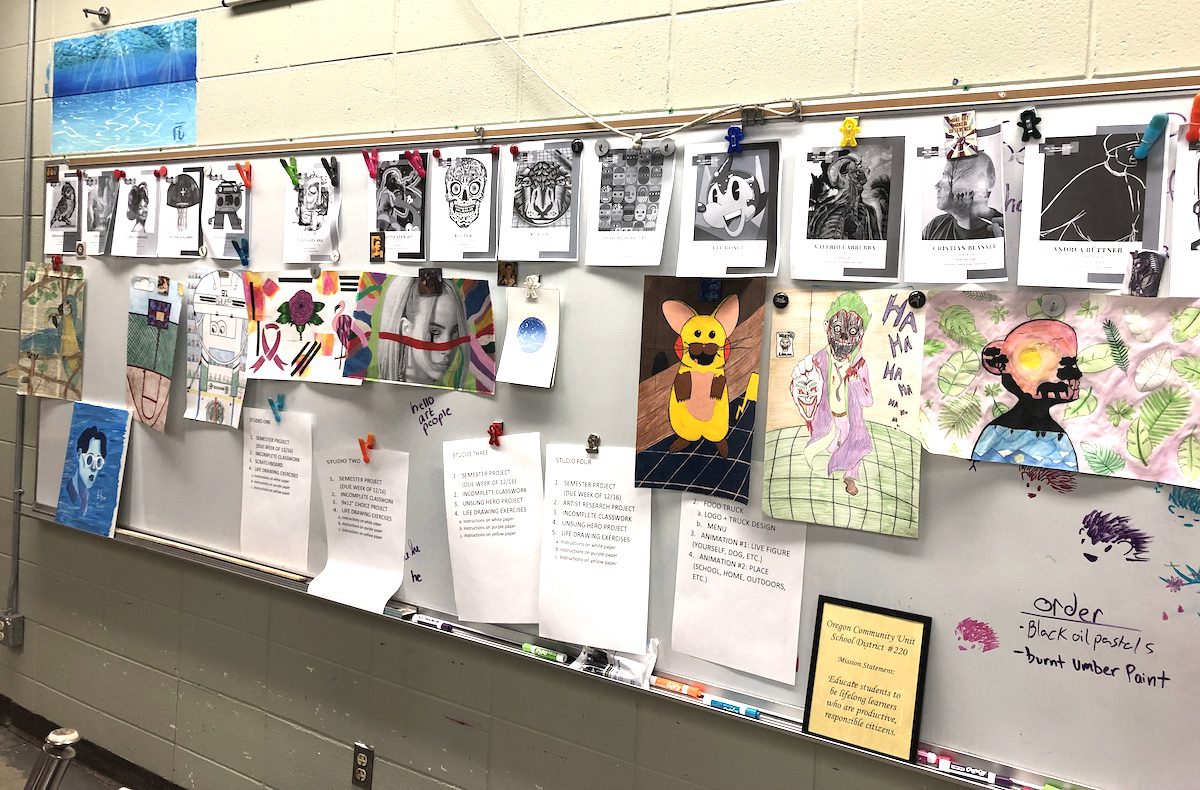An art educator’s curriculum is never truly finished. Think of your students who are quick to call their project completed. We can point out some areas for improvement, elements to add, remove, or change. Some have claimed that artwork is also never truly finished, but pauses in interesting places. Leonardo da Vinci said, “Artwork is never finished, only abandoned.”
We know better than to abandon our curriculum! As educators, we know the importance of evolving with our students’ needs. We also respond to contemporary issues and practices in art education. We factor in the latest research, best practices, and new trends in contemporary art. Our job is simply never done, and that can feel overwhelming. We risk the temptation to seek comfort in the familiar and a routine.
Identifying Holes in Your Curriculum

While it’s easy for educators to see what’s working in their classroom, it’s often harder to identify what’s missing. We want to cling to those successful projects and put our blinders up to where we might be falling short. Real growth can come from taking a critical look at our lessons and looking at our curriculum as a whole. Step back and try to find the who, what, when, where, and why that is missing in your teaching.
The Who
Make a list of every artist you cover in your curriculum. Who are they? Who is represented? Historically, art education has largely favored the white, European, male artists to share with students. If you think back to your own K-12 art classes, you may have been taught these artists exclusively.
Fortunately, many art educators know the value of celebrating diversity in the classroom. Today art curricula include much more representation. When you’re looking at your list, see if you’re representing a variety of perspectives. There’s no magic number or ratio of who should be represented, but as an educator preparing students to be productive citizens, you should want your curriculum to reflect the global community students live in.
The What
Not every art teacher is project-based or even tailors their curriculum around artists. Perhaps you have your curriculum organized around the elements and principles, techniques and skills, or any other number of ways to teach art. You may need to look at your curriculum and ask yourself, “What is missing?”
For example, if you’re teaching students about the elements and principles, you are most likely hitting all of them throughout your time with students. However, you may have developed some favorites over the years, and each element and/or principle may not be making the most impact with your students. Identify those weak links and take time to research new projects that may boost your curriculum to new heights!
The When
Take another look at your list of artists. When were these artists living and creating? Obviously, the entirety of art history cannot be represented in a school year, or even across a K-12 experience, but you can represent a variety in the lessons you teach. The point is, you don’t want to mislead your students into thinking art is something of the past. In contrast, focusing only on the contemporary deprives students of the rich history that inspired artists of today.

Students need a balanced understanding of how art has evolved throughout history. This gives them the context needed to understand better how some artists broke from tradition and introduced new ways of thinking and producing art—even within a single artist’s life, much can be taught by sharing examples over time. Showing an early Van Gogh work like, The Potato Eaters (1885), helps students see how the artist moved away from dark colors and chose more vibrant hues as in later work like Wheat Field with Crows (1890). Identifying any missing time periods can be beneficial to developing a more well-rounded curriculum.
The Where
Just as we’ve asked ourselves questions of who, what, and when is missing in our curriculum, we can also start to identify geographic locations represented in our lessons. Traditionally, art education has focused mainly on artists from Europe, but we know art has been created all over the world throughout history! We can introduce our students to a great variety of perspectives by sharing artists and traditions from different cultures.
You may even consider adding pins or stickers to a world map with each new artist or culture your students discover. This can be a great visual aid for students to see that every culture around the world values art. We already know this, but students can start to realize how art documents, responds to, and influences history. You’re also providing diverse representation by including artists of the world. Your students will see you value artists from all over—not limited to the United States and Europe. There’s so much more out there to share with our students. Take a close look at your curriculum and see if there are any missing areas you and your students could discover together!
The Why
This question may be less obvious than the preceding four, but it’s also important to examine the whys in art education. Why am I teaching this particular lesson? Why do artists create? Why do we interpret an artwork the way that we do? There are endless whys to ask ourselves and our students in the classroom. However, we often feel pressed for time or are too focused on the artmaking to really get into the reasons of why.

Take some time with your curriculum and ask yourself why you feel so strongly about specific lessons. Share those with your students! They often have no idea what goes on behind-the-scenes. In many of their other classes, the reason they are studying a certain topic is simply it’s the next chapter in their textbook. Art educators typically have some more autonomy and freedom in what their curriculum looks like. Explain to students your why. This can have a profound effect on how they view your class. You are tailoring a curriculum to their needs and interests as well as to best prepare them for the next grade level, college, career, and real-life applications. Think of those whys along the way, and take some time to pause and answer them. You may be surprised at how those answers can help strengthen your curriculum.
Final Thoughts
We know the value of reflection. We ask our students to reflect on their artistic choices all the time. However, life in and outside of the classroom can get chaotic and rushed. The first thing to go seems to be time to question, time to reflect, and time to respond. While artmaking is often our main focus, and arguably the most fun, when we start to cut out those other components, our curriculum gets really watered-down. You may find yourself less fulfilled because your teaching has become unbalanced.
Remember the value of reflection, and take some time to ask questions and look at your curriculum critically. The job is never done. Don’t abandon the great work you’ve already created! Keep evolving for yourself and the needs of your students.
What areas do you hope to add to your curriculum next year?
How do you reflect on your teaching practice?
How has your curriculum evolved since you first started teaching?
Magazine articles and podcasts are opinions of professional education contributors and do not necessarily represent the position of the Art of Education University (AOEU) or its academic offerings. Contributors use terms in the way they are most often talked about in the scope of their educational experiences.






